The Faroe Islands’ G! Music Festival: a Mini Mardi Gras in a Place You’ve Probably Never Heard of…

The Faroe Islands seem a very unlikely place to hold a music festival. A string of rocky islands located in the North Atlantic between Scotland, Norway and Iceland, it has a population of around 56,000 people and, as any tour guide will tell you, approximately twice as many sheep. The weather and the terrain are wild and unpredictable — last week, as the Northern Hemisphere roasted, it ranged from clear and sunny to cold with driving rain, with temperatures between 50 and 65 degrees Fahrenheit. The country has a strong music tradition but just a handful of venues and one record label — Tutl (“total”), which, true to its name, releases local music in basically every genre, from classical to hip-hop to death metal, and whose office also holds the Faroes’ one surviving record store.

The country has a thriving music scene that has been showcased nearly every year for the past two decades at the G! Festival, which counterintuitively is held on and near the beach in a small village called Syðrugøta (“SID-ru-GO-tah”), drawing around 5,000 people each year to a place with a population of around 400, no hotel and few stores.
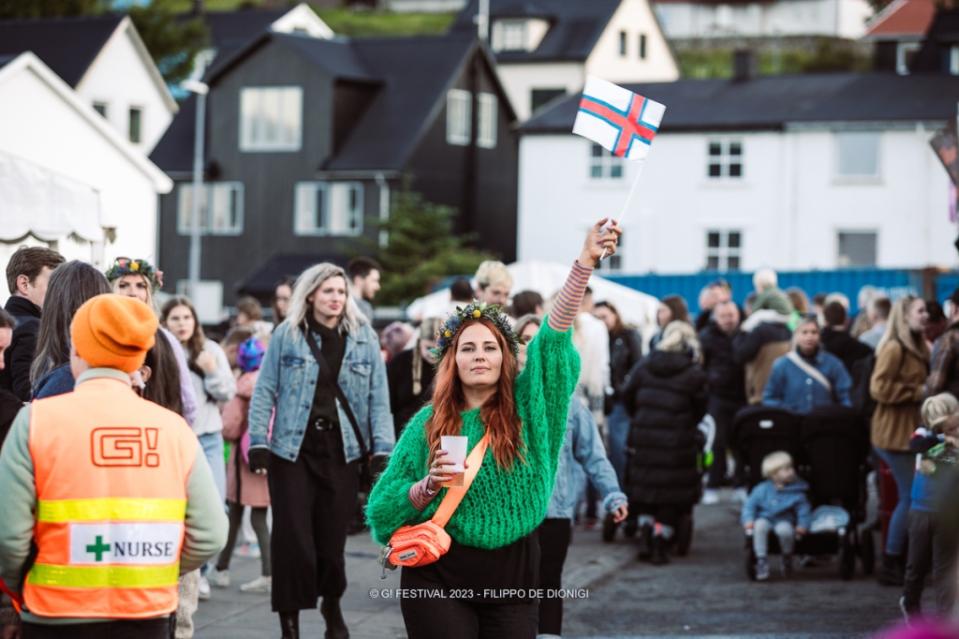
Yet the G! Festival — pronounced “Geh festival” in proper localese — has become a sort of Faroese Mardi Gras, a de facto national celebration of the country’s music and culture. In past years it has featured major international talent like Fatboy Slim, Jose Gonzales, Kris Kristofferson and Death Cab for Cutie’s Ben Gibbard, but its lineup is dominated by most of the top Faroese artists as well as many acts from Norway, Iceland, England and others — and probably would feature more international artists if some of their teams could grasp the reasons for a certain lack of glamour. “We sometimes have to explain, ‘We can’t give you four limos,'” one local music person says. “There are plenty of taxis in the Faroes, but no limos like they’re thinking.’”

Nordic countries tend to party hard in the summer, and needless to say, that’s ramped up even more when approximately 10 percent of the total population is at a festival. The sun barely sets at this time of year — it gets twilight-ish at around 11:30 p.m. and starts getting light again around two hours later — and on the three-day festival’s closing day, the first performance began at 11 a.m. and the last act went on at 3 a.m. the following morning; we passed several groups of people, still drinking beer and smoking cigarettes as we stumbled to our taxi to the airport at 6 a.m. on Sunday.
But for most of the day it’s a family, community affair — there are hot tubs, volleyball and other games on the beach, swimming (although the water is freezing), and little kids were everywhere, wearing comically oversized headphones in areas where the music was loud.

Elinborg (Photo: Filippo De Dionigi)
Performances took place on three main stages: the big stage was on the beach, right beside the sea; a smaller outdoor stage was a block away on a playground’s soccer pitch; and an indoor stage was located in a small concrete warehouse nearby (although nothing in Syðrugøta is far from anything else). On Saturday there were more experimental-leaning sets at the the stunning Gøta kirja, an ultra-modern Lutheran church with spectacular acoustics, and some loose performances were staged in a cozy room in the back of a building called Tøting, which housed the festival’s office (such as it was).
This year was light on non-Nordic acts — the “biggest” were French-Breton composer Yann Tiersen, who gave a mesmerizing Saturday performance in Gøta kirja, Palestinian-French TikTok star Saint Levant, and a wild set from all-female British agit-punk trio Lambrini Girls — but most interesting were the local acts: Some but by no means all of the highlights included Evanescence-esque local hero Eivør (probably the biggest act the country has produced thus far), rappers RSP and 19-year-old Marius DC, alt-pop singer Elinborg (Eivør’s sister), R&B singer Tamara, veteran punk act 200, reunited electro-pop duo Byrta, alt-rock singer Brimheim, pan-Nordic group Klingra (a sort of cross between Sigur Ros and Godspeed You Black Emperor), and best of all, a “surprise” set from surrealist hip-hop collective Aggrasoppar, whose name means some kind of fungus and are a sort of cross between Odd Future, Madlib and Mac Miller’s woozier moments, with surreal lyrics, heavy beats and bass and a wild sense of humor (a local was translating for us while the group performed).

Popular local act Joe and the Shitboys, who describe themselves as a “queer vegan shitpunk band from the Faroe Islands” and have played extensively outside the country, didn’t perform this year — the festival tries to feature acts who haven’t played recently, with annual headliner Eivør being an exception — but its members were all over the festival.

Brimheim (Photo: Theres Stephansdotter Bjork)
There was even a “chain dance,” a local custom whereby singers in traditional dress sing a capella traditional songs, and a chain of people dozens long hold hands and do a two-steps-forward, one-step-back dance while singing along. All ages join in, from children to elderly and even the hippest and/or wildest attired locals.
The country has a strong musical tradition and nearly all of the local acts have strong and nuanced singers. Many sing in Faroese and some of the more ambitious ones sing in English — some very well, others with some of the awkwardness common to most ESL lyricists (nearly all of the locals speak English, often fluently). Not surprisingly, given the small population, many of the acts collaborate: Eivør’s drummer was seen playing with at least three other artists; several singers sang backup with multiple groups; another guitarist performed with three different artists, played a solo set and late Saturday night was playing drums in a loose jam with two other musicians.

The festival’s director and godmother is Eivør’s longtime manager Sigvör Laksá, although it was founded by her daughter and some friends in 2002. That first festival lasted for a day and had around 10 acts — nine Faroese and a Bulgarian band that happened to be in the islands, and took place on the beach “on a stage built on sand,” Sigvör recalls. “I thought it was a crazy idea, but it worked and people loved it.”
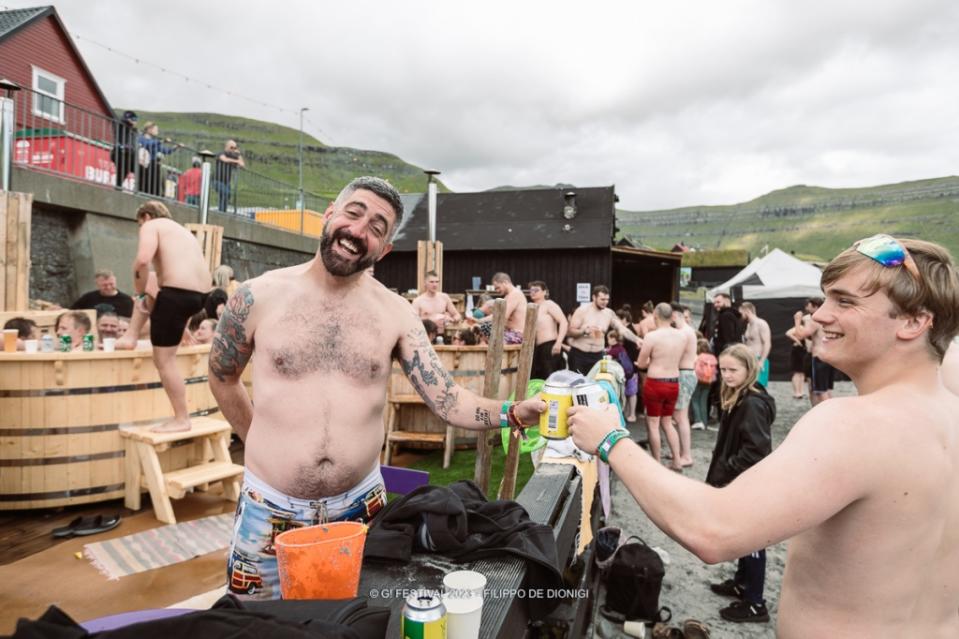
It has been held nearly every year since, with the biggest attendance coming in 2005, when Swedish hair-metal outfit Europe headlined and drew 10,000 people (presumably a large percentage being visitors). “The festival was formed [primarily] to be a celebration, an event that young people would enjoy,” Laksá continues, “but second, it’s to get Faroese music [beyond] the islands, and to create [awareness] of it. So in the second year, they invited industry people from Germany and Iceland.” That outreach has continued over the years with the formation of Faroe Music Export and increased in the past two, with Norwegian artist manager and industry vet Glenn Larsen taking the helm in 2021.

Aggrasoppar (Photo: Filippo de Dionigi)
The country has multiple music venues — particularly in the capital and tourist center in Tórshavn, which also boasts an awesome bar called Sirkus, not far from Tutl’s office, that acts as gathering point for the music scene and hosts gigs on its second floor.
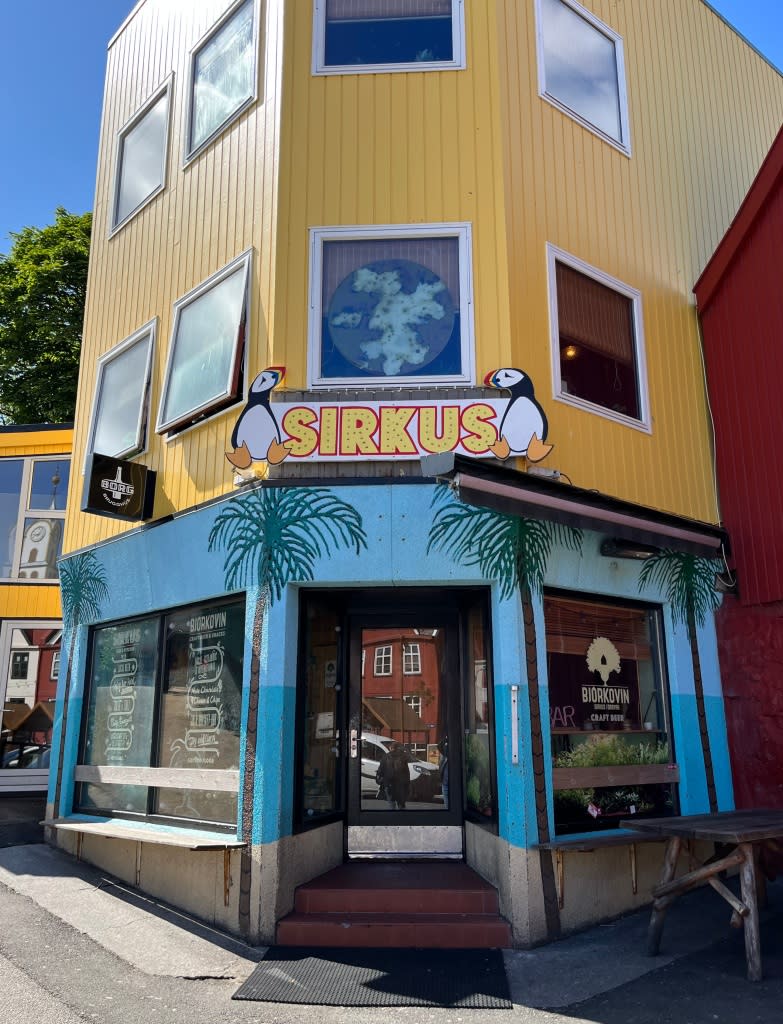
Tutl, run by Danish-born classical musician Kristian Blak, has released a wild range of music by many of the country’s most active artists, which it sells online and in the store. The store hosts performances as well: During our visit Aggrasoppar played a 20-minute set drastically different from the one they’d perform that night — in the store the group’s trio of rapper-singers were backed by a fluid live band consisting of a guitarist, bassist and drummer (with Dania Tausen, a strong singer with a flair for pop melodies, operating samples and effects); the group’s Trygvi Danielsen ensured that he made an impression by rap-singing directly into the faces of a series of visitors to the small store.

St. Levant (Photo: Filippo de Dionigi)
But that night’s set was wildly twisted hip-hop, with the musicians playing percussion and grooving in the back of the stage. There were oddball dancers as well and a jarring light show, with nearly everyone onstage wearing strange animal masks; Marius DC and Fríði from Joe and the Shitboys joined them for “Kolasalat” from the group’s 2020 album. The songs groove along at a woozy, stoner pace, with lines of Faroese rapping unintelligible to English-speaking ears except for the occasional lines ending with “Wheeee!”s and “Yeah!”s and some f-bombs and hip-hop terms like “bitch-ass” and “fuckboy.” It was the most exciting, imaginative and just plain weird performance we saw all week — the group would seem to have enormous potential with the Pitchfork and alt-hip-hop audiences, language barrier notwithstanding.

Eivør (Photo: Marius Mada Dale)
Obviously, the country’s small size and language barrier are major obstacles preventing these artists from reaching the ears they might in larger countries. Blak tells Variety that his label’s wide range of music prevents it from promoting releases in a more-focused, genre-specific manner, pointing to their metal acts in particular (although he noted licensing deals with California-based Metal Blade for a couple of them).
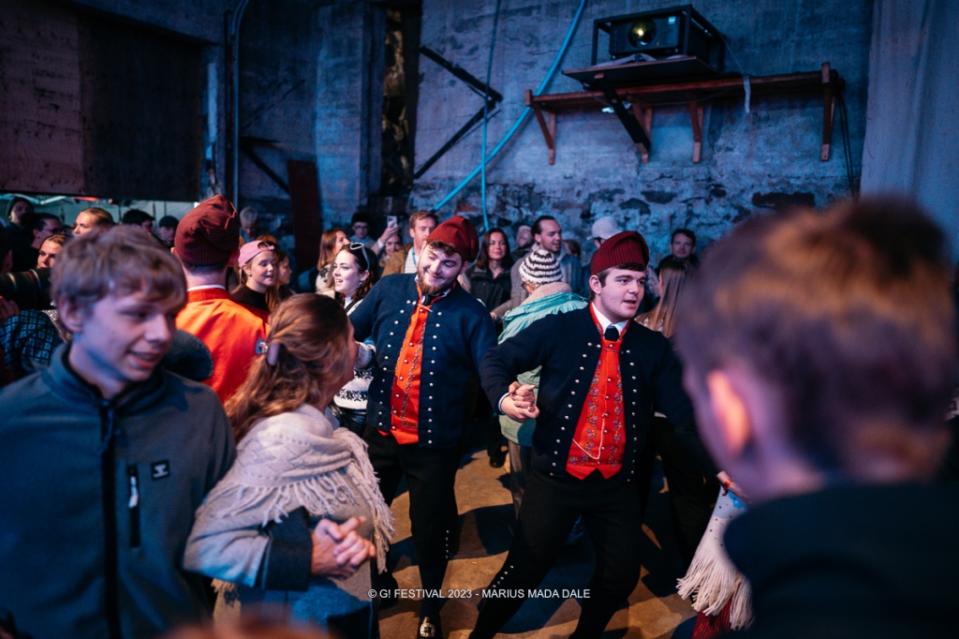
Chain dancing (Photo: Marius Mada Dale)
But the festival and the country’s outreach has gained momentum since the pandemic: Eivør worked out of Denmark for many years but has returned to the Faroes; Joe and the Shitboys perform frequently in England and Europe; Aggrasoppar and four other acts played this year’s Great Escape festival in Brighton. A first step toward bigger things for many of them is Iceland’s Airwaves festival, where last year Marius DC, a lively rapper and powerful performer, was touted by Rolling Stone’s U.K. edition as one of the event’s top three acts.
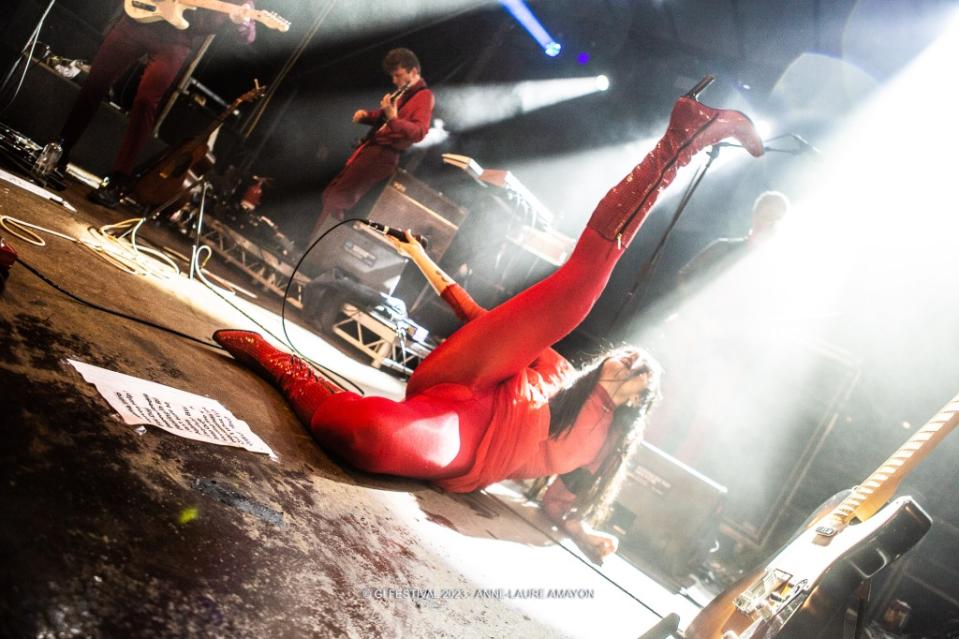
Brimheim (Photo: Anne-Laure Amayon)
Remarkably, two of the leading lights of the country’s music scene — Laksá and Blak — are decades older than most of the musicians they support. “I’m 60 now and sometimes I think someone young should take over,” Laksá says. “And in a few years I hope someone does. But the reason I do this is because I think it’s very important for the identity of the young people here in Syðrugøta. Usually young people leave [the country] because they think it’s boring, but the ones in this village tend to come back because they have a strong feeling for it, and the festival is a big part of that. I think they’re very proud of it.”
During her headlining set on Thursday, Eivør gestured to the beach and said in English, “I grew up in this village — I played in this sand.”
“G! Festival is not a business — nearly everyone who works here is a volunteer,” Laksá concludes. “But it has a huge social value — and that’s not something you can count.”

Best of Variety
Sign up for Variety’s Newsletter. For the latest news, follow us on Facebook, Twitter, and Instagram.

 Yahoo News
Yahoo News 
